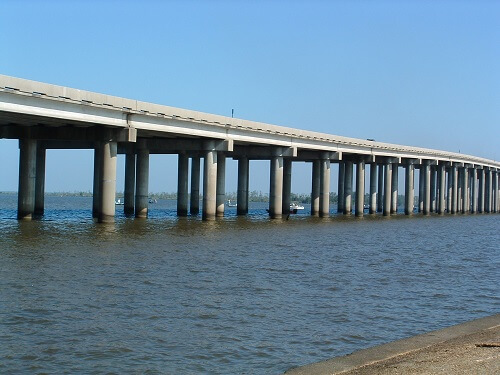Beam bridges are the oldest and simplest type of bridge. They consist of horizontal beams that are supported by piers at each end. Beam bridges are commonly used for short to medium spans, usually up to 250 feet. They have some advantages and disadvantages over other types of bridges. In the following section, all the pros and cons of beam bridges are described.

Advantages of Beam Bridges
There are several advantages to beam bridges:
- Easy to construct: Beam bridges are relatively easy to build. They can be constructed quickly and with less effort than other types of bridges.
- Cost-effective: Beam bridges are generally less costly than other bridge types, making them an attractive option for small to medium spans.
- Maintenance: The roadway of a beam bridge can be easily maintained and repaired due to its simple design.
- Adaptability: The design of a beam bridge can be adapted to support multiple lanes of traffic, sidewalks, and railings.
- Material options: A beam bridge can be constructed using a variety of materials, such as wood, concrete, and steel.
- Thermal expansion: Beam bridges can easily withstand the effects of thermal expansion and movements of the ground.
- Easy to relocate: A beam could be engineered removed from the ultimate position and raised fleetly into place with the least disruption of traffic or navigation.
- Flexibility: Beam bridges are flexible and can adapt to changes in the environment, such as temperature fluctuations and seismic activity.
- Environmental impact: Beam bridges have a lower environmental impact than other types of bridges because they use fewer materials and can be built with sustainable materials.
- Accessibility: Beam bridges are accessible to pedestrians and cyclists, as they can include sidewalks and bike lanes.
- Wide range of applications: Beam bridges can be used in a variety of applications, including rural roads, urban areas, and industrial sites.
- Short construction time: Beam bridges can be constructed quickly, which reduces disruption to traffic and surrounding areas.
{adselite}
Disadvantages of Beam Bridges
There are several disadvantages of beam bridges:
- Span limitations: Beam bridges have a limited span and do not allow large boats or vehicles to pass underneath.
- Heavy boat traffic: Mostly heavy boat traffic or large ships cannot pass underneath a beam bridge.
- Not suitable for long spans: Beam bridges are not suitable for very long spans and can only be used for short to medium spans.
- Weight limitations: Beam bridges are not suitable for very heavy loads and may not be able to support the weight of heavy vehicles.
- Speed limitations: Beam bridges are not suitable for high-speed traffic and may have lower speed limits than other types of bridges.
- Height limitations: Beam bridges are not suitable for very tall vehicles, and the height of the bridge may limit the types of vehicles that can cross.
- Width limitations: Beam bridges are not suitable for very wide vehicles, and the width of the bridge may limit the types of vehicles that can cross.
- Maintenance costs: Maintenance of beam bridges can be expensive due to the need for regular inspections and repairs.
- Design limitations: Beam bridges have design limitations, which can make them unsuitable for certain applications, such as long-span bridges and high-load bridges.
- Weight distribution: Beam bridges require careful weight distribution, which can be a challenge in certain situations, such as high wind or seismic activity.
- Structural limitations: Beam bridges have structural limitations, which can make them less suitable for locations with high levels of traffic or heavy loads.
- Weather impact: Beam bridges can be impacted by weather conditions, such as ice, snow, and high winds, which can cause damage and require repairs.
- Not suitable for marine environments: Beam bridges may not be suitable for marine environments, as they can be impacted by saltwater corrosion and other environmental factors.

